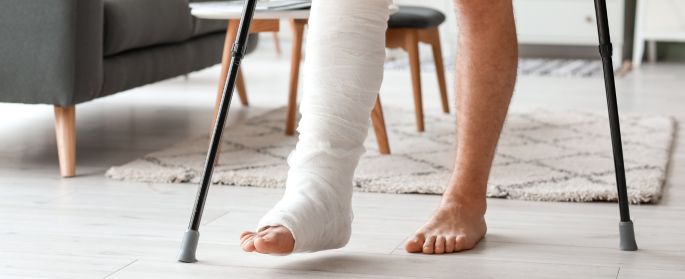Temporary disability (TI) occurs when, whether due to a common or professional illness or an accident, the self-employed worker is temporarily unable to carry out his or her work activity, regardless of whether the cause is related or not to the job.
The application requirements, the amount and the processing process differ depending on whether it is a leave due to a common illness, an occupational illness or a work-related accident.
As a preliminary matter, the applicant for the self-employed IT must require health care during the extension of the sick leave to be entitled to receive the corresponding benefit as well as present the medical report to their mutual insurance company, within a period of 6 months, so that access to the benefit is not cancelled.
Common sick leave
What are the requirements to request your temporary leave or leave due to common illness?
To access temporary disability benefits, self-employed workers must contribute for common contingencies, except for economically dependent self-employed workers (TAED).
In addition, it is necessary to be registered, to have contributed at least 180 days in the last 5 years and to keep the payment of Social Security contributions up to date.
Meeting these requirements ensures access to the necessary coverage, providing support during periods of disability.
How much do you charge for common sick leave?
For self-employed professionals, the common sickness benefit varies depending on the period of sick leave. From the 4th to the 20th day, both inclusive, it is 60 % of the regulatory base, and from the 21st day it rises to 75 %.
The monthly payment is made on the first business day of each month, with a maximum limit of the fourth calendar day of the month, according to Social Security regulations.
Leave due to professional illness or accident at work
Which are the requirements?
To guarantee coverage in cases of sick leave due to accident or illness linked to professional activity, it is necessary to contribute for professional contingencies, the percentage of which varies depending on the CNAE of the activity. Since January 1, 2019, this contingency is mandatory, except for the self-employed in the special agricultural system.
It highlights that, according to Law 6/2017, the accident "in itinere", that is, during the self-employed person's travel from their home to the workplace, is considered work-related if the causal relationship with the professional activity is demonstrated.
How much does a self-employed person receive monthly for sick leave due to a work-related accident or occupational illness?
- As of the day following the medical leave, the affected person is entitled to a subsidy equivalent to 75 % of the regulatory base.
- In situations in which the accident or illness results in irreversible consequences, the corresponding mutual insurance company will grant fixed compensation or assume responsibility for the lifetime pension, in accordance with the provisions established by the Provincial Directorate of the National Social Security Institute. The amount of this compensation will vary depending on the degree of disability and the individual's regulatory basis.
- In the event of death, the beneficiaries, such as spouse, common-law partner and children, will receive a flat-rate compensation and a pension, provided they meet the requirements established for this purpose.
How is the temporary disability of a self-employed person processed due to a work-related accident or occupational disease?
To request temporary disability benefit as a self-employed person, you must go to the mutual insurance company designated when registering, presenting the request for direct payment along with the required documentation, such as the medical leave report, proof of payment to Social Security, declaration of activity, copy of DNI or NIE, form 145 and copy of the last contribution bulletin.
Furthermore, in the first 15 days of the disability, it is necessary to submit a statement on the management of the establishment and, semi-annually during the disability, report on its status. Failure to make these presentations may result in the suspension of payment of the benefit, with the possibility of initiating relevant actions ex officio.
Guide to temporary disability (IT) for the self-employed
- The temporary disability benefit is determined by applying percentages to the regulatory base, which varies between 701.63 and 4,495.50 euros per month for general self-employed workers, and between 1,000 and 4,495.50 euros per month for corporate self-employed workers.
- The new regulations allow monthly net returns to be reported several times a year, calculating the regulatory base as an average over the period.
- Maximum access to the benefit is 12 months, with the possibility of extension.
- During the leave, the self-employed person contributes, being responsible for payment only for the first two months, then the mutual insurance company or corresponding entity assumes it.
- The medical inspection has a period of five days to respond to discharge proposals.
- The suspension of the benefit may occur if scheduled reviews are not attended, and will be lifted if the non-appearance is justified within 10 business days.
- If during the temporary disability of the self-employed person there is a cessation of activity, he or she will continue to receive the IT benefit in the same amount as the benefit for cessation of activity until it is exhausted. From the moment of cessation of activity, the self-employed person will receive the benefit for cessation of activity and the time spent in IT will be deducted from it.

